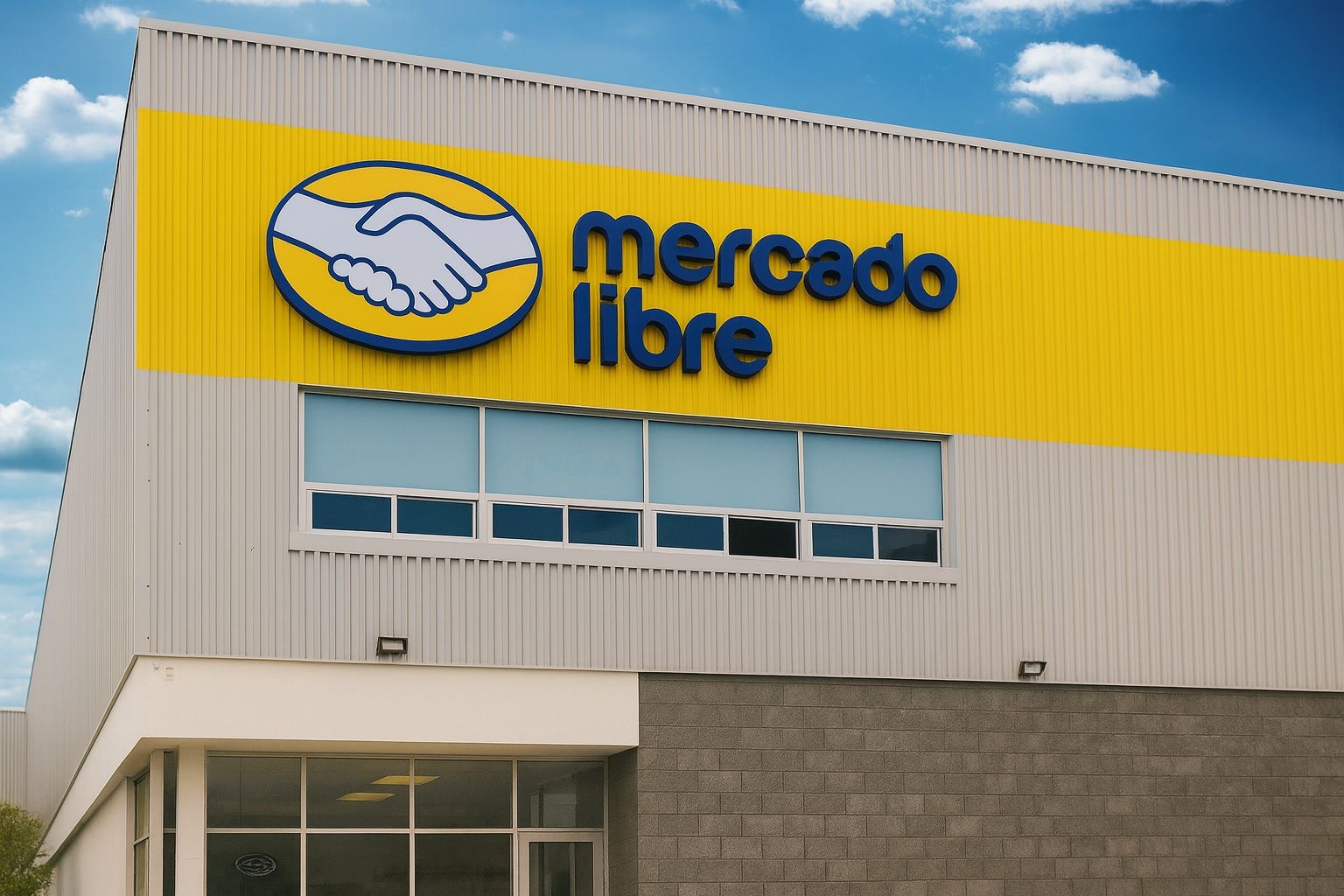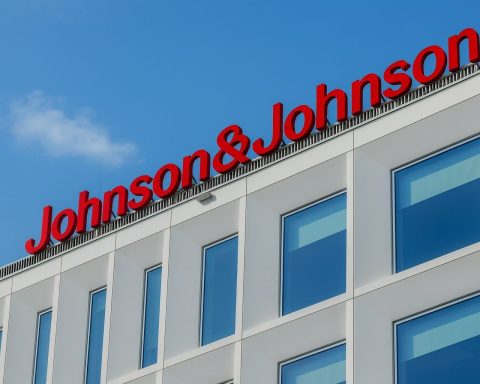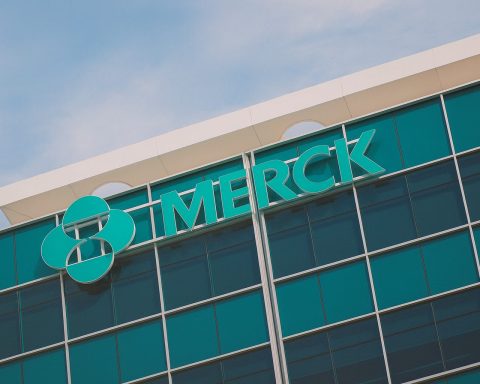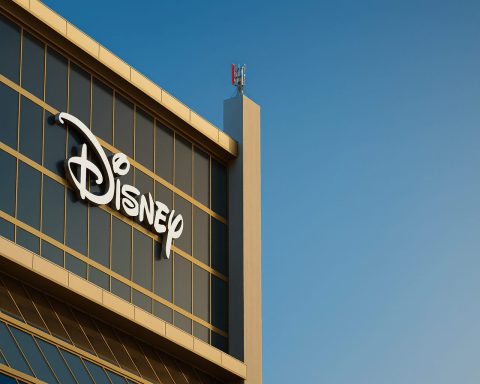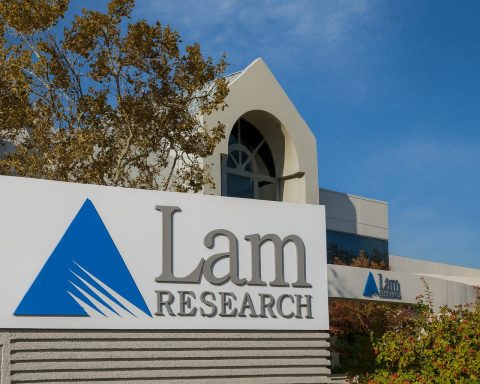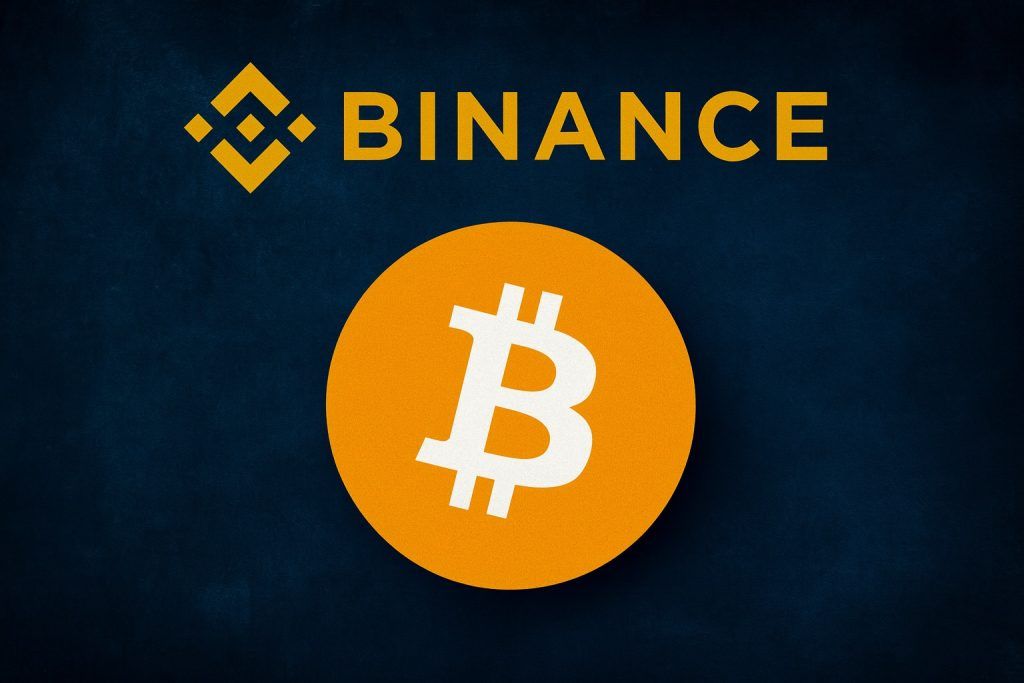- Market whiplash: MercadoLibre’s share price fell to around $2,048 on Oct. 15, 2025 – a ~5% one-day drop – after peaking near $2,500 late last month [1] [2]. The stock remains up about 20% year-to-date, but is well below its 52-week high (~$2,645) and has retraced 10–15% from late-September highs [3] [4].
- Mixed earnings: Q2 2025 results showed revenue of $6.8 billion (+34% YoY) beating estimates, but net income of $523 million missed forecasts due to heavy investments in Brazil (free shipping promos) squeezing margins [5]. CFO Martín de los Santos said these costs are intentional short-term trade-offs: “we are very optimistic about the long-term trajectory of our profitability” [6].
- Expansion moves: The Latin American e-commerce giant is pushing beyond consumer retail. It launched a B2B marketplace unit across Brazil, Argentina, Mexico and Chile to tap wholesalers – a segment of “higher average tickets, recurring purchases, larger orders and lower return rates,” the company noted [7] [8]. On Oct. 9, MercadoLibre entered Brazil’s online pharmacy market by acquiring a drugstore – a first step to selling medications via its platform [9] [10].
- Competitive pressure: Brazil (~half of MELI’s revenue [11]) remains a fierce battleground. MercadoLibre dominates Latin American e-commerce, but faces rising competition from Amazon and Sea Limited’s Shopee, as well as regional retailers. JPMorgan warns that intensifying Brazilian competition means “growth should come at a higher cost to MELI in the coming years” [12]. In fintech, MercadoPago’s integrated payments are challenged by fast-growing digital banks like Nubank and Argentina’s Ualá [13].
- Fintech surge: MercadoLibre’s fintech arm (MercadoPago) is booming. By mid-2025 its credit portfolio nearly doubled YoY to ~$9.3 billion [14]. Monthly active fintech users jumped ~30% to ~68 million, reflecting deeper user engagement [15]. Management is tightening lending in Brazil and Mexico amid higher interest rates and a “weaker macroeconomic outlook” in those markets [16] [17], but loan default rates are near historic lows, indicating strong credit quality.
- Analyst bullishness: Wall Street remains largely positive on MELI. The consensus rating is Moderate Buy with an average 12-month price target around $2,800 [18]. Price forecasts range from JPMorgan’s cautious $2,600 (Neutral) to Susquehanna’s $2,900 (Positive) [19]. Several analysts emphasize MercadoLibre’s robust long-term fundamentals – from e-commerce growth to fintech expansion – despite short-term margin pressures. Santander’s research, for example, argued that recent earnings hiccups “should be limited” and don’t derail the longer-term growth story [20].
Stock Volatility in October
MercadoLibre’s stock (NASDAQ: MELI) has seen significant swings in recent days. After trading as high as ~$2,500 per share in late September – near its 52-week peak – the stock stumbled through early October amid global tech volatility and Latin American market jitters [21]. On October 15, shares opened around $2,182 but plunged over 5% intraday to roughly $2,048 [22], before stabilizing near the low $2,100s. This slide continued a pullback from the late-September highs and put the stock about 10–15% below its recent peak [23].
Even with the October dip, MercadoLibre is still modestly positive in 2025. The stock is up roughly 20% year-to-date [24], reflecting solid gains earlier in the year, though it has lagged behind U.S. benchmarks. Over the past year, MELI has risen only about 4–5%, trailing the S&P 500’s performance by roughly 8.5 percentage points [25]. In late 2024, MercadoLibre shares hit an all-time high around $2,645 [26] [27], so the current price remains well off those levels.
Market analysts attribute the recent weakness less to any one company news item and more to broader concerns. Notably, when MercadoLibre announced its entry into online pharmaceuticals on Oct. 9, the stock reaction was muted [28]. Instead, traders have been skittish about macroeconomic headwinds (like inflation and currency instability in key markets) and intensifying competition in e-commerce. These fears were underscored by JPMorgan’s early-October note cutting its price target for MELI to $2,600 and warning that rising competitive pressure in Brazil (from Amazon and Shopee) will likely squeeze margins [29] [30]. Higher interest rates and currency volatility – especially the weak Argentine peso – have also made international investors more cautious [31].
Despite the pullback, MercadoLibre’s longer-term trajectory retains supporters. The stock is still a massive outperformer over the past decade and remains the most valuable company in Latin America by market capitalization (around $109 billion) [32]. Some context: even after recent dips, MELI is a 78-bagger since its 2007 IPO [33], and it has weathered previous bouts of volatility. Many investors see the current weakness as a reflection of short-term noise rather than a fundamental crack in the company’s story – as evidenced by a modest bounce after the latest earnings (shares popped ~1.3% in post-market trading on the Q2 release) [34].
New Developments: B2B Push and Pharma Foray
Several strategic developments in the past weeks underline how MercadoLibre is aggressively expanding its business. In late September, the company launched a new business-to-business (B2B) e-commerce division aimed at corporate buyers [35]. The B2B platform, rolling out in Brazil, Argentina, Mexico and Chile, is designed to connect wholesalers and large purchasers with suppliers via MercadoLibre’s ecosystem [36]. This move positions MercadoLibre to capture a slice of the huge corporate procurement market – which by volume is estimated to be four times larger than the consumer e-commerce market [37].
Early indications show substantial demand: over 4 million users were already enabled for wholesale purchases during a year-long pilot phase [38]. MercadoLibre highlighted the strategic value, noting B2B commerce tends to have bigger, repeat orders and fewer returns. “This market is strategic for the business, as it is characterized by higher average tickets, recurring purchases, larger orders and lower return rates,” the company said in a statement [39]. By leveraging its existing logistics and marketplace infrastructure, MercadoLibre aims to become a key intermediary for Latin American businesses sourcing goods, potentially unlocking a new growth vertical beyond its consumer base.
Just a few weeks later, MercadoLibre made headlines in Brazil’s pharmaceutical sector. On October 9, the company announced it had acquired a drugstore in Brazil – a move enabling it to sell medicines online in its biggest market [40] [41]. This marks MercadoLibre’s first step into Brazil’s multi-billion-dollar pharma retail space, which until now was a white space for the firm due to regulatory restrictions. Brazilian law requires e-pharmacy sellers to own at least one brick-and-mortar drugstore, so MercadoLibre’s purchase fulfills that legal prerequisite [42].
Fernando Yunes, MercadoLibre’s Brazil head, emphasized that the company doesn’t plan to become a pharmacy chain itself, but rather to “be a marketplace – we want drugstores selling on MercadoLibre” [43]. In other words, MercadoLibre aims to host third-party pharmacies on its platform, expanding online access to medications. Brazil was the only major LatAm market where MercadoLibre hadn’t offered online medicine sales (it already does in Mexico, Argentina, Chile, and Colombia) [44]. Executives see big opportunity: “The pharmaceutical sector is the only one in Brazil that we do not operate in. It’s a sector where we see potential for improvement in access,” Yunes noted [45]. The company is also lobbying Brazilian regulators to modernize rules that have limited online drug sales, arguing that laws “created a long time ago” need updating for the digital age [46]. If successful, MercadoLibre could tap into a lucrative new market and further integrate healthcare products into its e-commerce and delivery network.
These expansion moves – into B2B and pharma – reflect MercadoLibre’s broader strategy of building a comprehensive ecosystem. In addition to those initiatives, the company is plowing record investment into logistics and technology across Latin America in 2025. According to reports, MercadoLibre planned roughly $13 billion in capital spending this year (a ~38% jump from 2024) to expand warehouses, shipping capacity, and fintech tech infrastructure [47] [48]. It is also dramatically scaling headcount, adding on the order of 25–30,000 new jobs (about a one-third increase in employees) to support growth, with about half of that investment focused in Brazil [49]. The payoff the company seeks is faster delivery times, a broader product catalog (even heavy goods), and fortified defenses against global rivals like Amazon. In Mexico – its second-largest market – MercadoLibre similarly announced a $3.4 billion investment plan for 2025 to grow its fintech and logistics footprint [50] [51]. All of this underlines a clear theme: MercadoLibre is reinvesting aggressively into growth, even if it pressures short-term profits.
Fintech Growth Powers “Amazon of LatAm”
Often dubbed the “Amazon of Latin America,” MercadoLibre is not only an e-commerce marketplace but also one of the region’s leading fintech players. Its financial services arm, MercadoPago, has been a key driver of growth. In the second quarter of 2025, fintech revenues grew nearly 30% year-over-year [52], and the company’s total payment volume has soared as more Latin Americans adopt digital wallets and credit. By mid-2025, MercadoPago had about 68 million monthly active users – a 30% YoY increase – using its payment app and services [53] [54]. Many of these users were drawn in through MercadoLibre’s shopping platform and then cross-sold into the fintech ecosystem for paying bills, sending money, and taking loans.
One standout metric is MercadoLibre’s fast-growing credit portfolio, which includes consumer and merchant loans offered via MercadoPago. In Q2, the credit book reached $9.3 billion, up 91% from a year earlier [55]. This surge in lending has been enabled by rich data from MercadoLibre’s commerce platform – allowing it to underwrite loans to sellers and buyers quickly, often at the point of sale. CEO Marcos Galperín explained that the synergy between e-commerce and financing is a virtuous cycle: “When you have more financing, e-commerce grows. And vice versa.” [56] [57] MercadoLibre’s strategy, he said, is to “give each user a private banker of their own” through its app, leveraging AI and user data to personalize financial offerings [58] [59].
Importantly, credit quality appears to be holding up even as the loan book expands. MercadoLibre noted that its non-performing loan ratios have improved in 2025, with 30–90 day delinquencies falling below 7% – the best level since it began tracking the metric [60]. Nevertheless, management is treading carefully amid macroeconomic storms. High interest rates in Brazil and Mexico have prompted a slightly more cautious stance on lending in those countries [61]. The company tightened credit issuance and raised some borrowing rates, anticipating a “weaker macroeconomic outlook” ahead [62]. Thus far, however, default rates remain near historic lows and MercadoLibre’s fintech bad-debt provisions have been manageable – a sign that its AI-driven credit models and user data are helping mitigate risk.
Beyond lending, MercadoPago is expanding into bank-like services (savings accounts, insurance, investments) and even credit cards. In Q2 alone, MercadoLibre issued 1.5 million new credit cards in Brazil and Mexico as it deepened its financial reach [63]. The company’s broader vision is to create an all-in-one digital finance platform that can serve tens of millions of underbanked consumers across Latin America – a region where roughly a quarter of people lack access to traditional bank accounts. With smartphone adoption and internet commerce rising rapidly, MercadoPago is riding a secular wave of fintech adoption. Its annualized total payment volume now rivals some major banks’ transaction volumes, and the segment contributes roughly half of MercadoLibre’s overall revenues (the rest coming from commerce transactions and advertising). If current growth rates continue, analysts predict MercadoLibre’s fintech arm could eventually be as valuable as its e-commerce business, mirroring how Asia’s Alibaba spawned the fintech giant Ant Group.
Competition: Sea Limited, Nubank, and the Battle for LatAm
MercadoLibre’s dominance in Latin America is being tested by a host of ambitious competitors – both global heavyweights and homegrown upstarts. In the e-commerce arena, the company faces an escalating battle in Brazil, its largest market. Sea Limited’s Shopee, an e-commerce powerhouse from Southeast Asia, has made surprising inroads in Brazil by offering ultra-low-cost shipping and gamified shopping features. Shopee’s aggressive promotions forced MercadoLibre to respond; in mid-2025, MELI slashed its free-shipping threshold in Brazil from 79 reais to just 19 reais (roughly $3.80) to make virtually all orders eligible for free delivery [64]. That change boosted MercadoLibre’s sales volumes but at the expense of profit margins – a trade-off management was willing to make to defend its market share [65] [66]. Shopee is also building out its own logistics hubs in Brazil and elsewhere in Latin America [67], which could erode one of MercadoLibre’s key advantages (its extensive delivery network). “Growth should come at a higher cost to MELI,” JPMorgan analysts cautioned, referring to these competitive pressures driving up expenses [68].
Meanwhile, Amazon continues to invest in its Latin American operations (particularly in Brazil and Mexico), and Walmart has strengthened its Mexico e-commerce offerings. Though neither has surpassed MercadoLibre’s scale in the region, they keep pressure on pricing and fulfillment speed. Local retailers and marketplaces also nip at MercadoLibre’s heels in various countries. For instance, Argentina’s MercadoLibre vs. MercadoPago faces local marketplace competitors in categories like real estate and cars, and Brazil’s Magazine Luiza and Via (formerly Via Varejo) have grown their online platforms. So far, MercadoLibre’s unmatched network effect – it’s the go-to app for tens of millions of shoppers – has helped it stay ahead, but the competitive moat is being constantly tested.
In fintech, MercadoLibre’s competition is arguably even fiercer. Nubank (NYSE: NU), the Brazilian digital banking juggernaut, has amassed an astonishing 122 million customers across Brazil, Mexico, and Colombia as of mid-2025 [69]. Nubank’s user base far exceeds MercadoPago’s and underscores how big the financial services pie has become. While MercadoLibre started in e-commerce and added fintech, Nubank took the opposite path – beginning in banking (credit cards, accounts) and now moving into products like payments and personal loans that encroach on MercadoPago’s turf. Nubank’s market value (around $40–$45 billion in 2025) is less than half of MercadoLibre’s, but it commands enormous scale in its core markets and continues to grow rapidly [70]. Similarly, Argentina’s Ualá and other app-based banks are adding users by the millions and expanding regionally [71] [72]. These fintech-only players often offer lower fees or higher savings yields, forcing MercadoPago to stay competitive and innovative in digital finance.
MercadoLibre’s leadership believes its integrated ecosystem gives it an edge over more focused rivals. Because many Latin Americans already use MercadoLibre to shop, the company can funnel those users into MercadoPago for payments, credit, and even insurance – a one-stop-shop model. “We believe that we have a tremendous competitive advantage in the fact that we have an ecosystem,” CEO Marcos Galperín told Reuters in an interview, noting that commerce and fintech services reinforce each other [73] [74]. Indeed, the synergy is visible: shoppers who finance purchases through MercadoPago often spend more on MercadoLibre’s marketplace, and merchants who use MercadoEnvios logistics or Mercado Crédito loans tend to scale their businesses faster on the platform. This ecosystem effect is something that single-focus competitors like Nubank (which lacks a retail marketplace) or Amazon (which lacks a banking arm in LatAm) are trying to replicate in pieces, but MercadoLibre still offers it under one roof.
That said, MercadoLibre cannot be complacent. The company is investing heavily to keep its platform sticky – for example, expanding Mercado Envios logistics to offer faster and cheaper shipping than competitors, and rolling out new services like Mercado Ads (its advertising network) to unlock additional revenue streams and merchant value. It’s also testing innovations like drone deliveries and electric vehicles to reach remote areas in Brazil [75], aiming to maintain a logistical edge. The competitive landscape in Latin America’s tech sector remains dynamic: today’s ally can be tomorrow’s rival (for instance, MercadoLibre partners with PayPal for cross-border payments, even as PayPal competes with Xoom on remittances). For investors, the key point is that MercadoLibre operates in high-growth markets with intensifying competition – and its ability to continue out-executing rivals will be crucial to sustaining its momentum.
What Wall Street Forecasts for MELI
Despite near-term concerns, expert sentiment on MercadoLibre’s prospects stays upbeat. Analysts on average rate the stock a “Moderate Buy”, and the mean 12-month price target sits around $2,810 – implying substantial upside from current levels [76]. Many on Wall Street view MercadoLibre as a cornerstone play on Latin America’s rising internet economy and remain willing to look past short-term margin dips in favor of long-term gains. “MercadoLibre’s growth story still has plenty of chapters remaining,” noted Motley Fool analysts, highlighting its 50%+ revenue growth and decades-long track record [77] [78].
That said, there’s a notable split between the most bullish and more cautious forecasters. Susquehanna, for example, recently reiterated a Positive rating with a $2,900 target – roughly 35% above the current stock price [79]. Their optimism hinges on MercadoLibre’s commanding market share and the runway for e-commerce and fintech adoption in underpenetrated Latin American markets. They argue the company’s reinvestment strategy (in logistics, AI, customer acquisition) will pay off in sustained high growth, and that MELI’s strong balance sheet gives it flexibility to weather any storms. On the cautious side, JPMorgan in early October maintained a Neutral stance and trimmed its price target from $2,700 to $2,600 [80]. JPMorgan’s analysts cited the competitive risks in Brazil – including Shopee’s rise and potentially higher costs to retain merchants and consumers – as reasons to be guarded [81]. They still acknowledge MercadoLibre’s leadership but prefer to wait for clearer signs that margins can stabilize amid the competitive spending.
Other institutions fall in between. Raymond James reportedly has a Strong Buy with a target around $2,750, while Jefferies recently held a Hold rating with a $2,800 target [82] [83]. Such a wide range of targets (spanning roughly $2,600 to $2,900) indicates uncertainty mainly around execution: will MercadoLibre continue delivering high growth and improving profits, or will it have to sacrifice margins for longer to fend off rivals? The company’s last earnings gave a mixed signal – revenue beat expectations but earnings per share missed by ~15% [84], showing booming sales yet thinner profit than hoped. However, some analysts have downplayed the earnings miss. Santander’s research desk noted that while Q2 results were a bit soft, they “do not expect sustained underperformance”, arguing that the fundamental growth trajectory remains intact [85]. In other words, a one-quarter profit dip doesn’t change the bigger picture of an expanding ecosystem.
Looking ahead, the upcoming Q3 and holiday-season results will be closely watched as a barometer of momentum. Investors will want to see evidence that MercadoLibre’s heavy spending on free shipping, new categories, and regional expansion is translating into accelerating user growth and market share gains. Any update on profit margins will also be key: an easing of margin pressure could reassure skeptics, whereas further compression might raise more “growth-at-any-cost” concerns.
For now, the consensus on Wall Street is that MercadoLibre’s long-term thesis remains compelling. Latin America’s e-commerce penetration is still far below that of the U.S. or Asia, and digital payments are just beginning to displace cash in many of its markets [86] [87]. As one market watcher summarized, MercadoLibre offers a rare combination of dominant market position, multiple growth engines (commerce, fintech, logistics, advertising), and exposure to a massive youthful population coming online. That’s why many fund managers have stuck with MELI through past volatility. As of October 2025, even after trimming some holdings, institutional investors like JPMorgan Asset Management and Invesco remained among MercadoLibre’s top shareholders [88] – a sign of confidence in the company’s resilience.
Bottom line: MercadoLibre, now a tech titan in Latin America, finds itself at an inflection point. Its stock has hit turbulence due to external pressures, but the company’s core businesses – online retail and fintech – are firing on all cylinders with double-digit growth. Executives are adamant that short-term margin sacrifices (for faster shipping, new markets, and user acquisition) will cement MercadoLibre’s dominance for the decade ahead [89]. If they’re right, the recent stock dip could prove to be a blip on an otherwise upward trajectory. Analysts and investors will be watching upcoming quarters closely to see if Latin America’s e-commerce king can convert its bold investments into the next leg of growth – and justify the bulls’ faith that MELI stock’s best days are still ahead.
Sources: Recent reports from Reuters, TS2.tech and other financial outlets were used in compiling this article [90] [91] [92] [93]. All stock prices and performance data are as of mid-October 2025.
References
1. ts2.tech, 2. ts2.tech, 3. ts2.tech, 4. ts2.tech, 5. ts2.tech, 6. ts2.tech, 7. ts2.tech, 8. www.reuters.com, 9. ts2.tech, 10. www.reuters.com, 11. ts2.tech, 12. ts2.tech, 13. ts2.tech, 14. ts2.tech, 15. www.investing.com, 16. ts2.tech, 17. ts2.tech, 18. ts2.tech, 19. ts2.tech, 20. ts2.tech, 21. ts2.tech, 22. ts2.tech, 23. ts2.tech, 24. ts2.tech, 25. www.mitrade.com, 26. ts2.tech, 27. ts2.tech, 28. ts2.tech, 29. ts2.tech, 30. ts2.tech, 31. ts2.tech, 32. www.mitrade.com, 33. www.mitrade.com, 34. www.investing.com, 35. www.reuters.com, 36. www.reuters.com, 37. www.reuters.com, 38. www.reuters.com, 39. www.reuters.com, 40. ts2.tech, 41. www.reuters.com, 42. www.reuters.com, 43. www.reuters.com, 44. www.reuters.com, 45. www.reuters.com, 46. www.reuters.com, 47. ts2.tech, 48. www.reuters.com, 49. ts2.tech, 50. www.reuters.com, 51. www.reuters.com, 52. www.reuters.com, 53. www.investing.com, 54. www.investing.com, 55. ts2.tech, 56. www.reuters.com, 57. www.reuters.com, 58. www.reuters.com, 59. www.reuters.com, 60. www.investing.com, 61. ts2.tech, 62. ts2.tech, 63. www.investing.com, 64. seekingalpha.com, 65. ts2.tech, 66. ts2.tech, 67. ts2.tech, 68. ts2.tech, 69. www.emarketer.com, 70. www.emarketer.com, 71. www.reuters.com, 72. www.reuters.com, 73. www.reuters.com, 74. www.reuters.com, 75. www.reuters.com, 76. ts2.tech, 77. www.mitrade.com, 78. www.mitrade.com, 79. ts2.tech, 80. ts2.tech, 81. ts2.tech, 82. ts2.tech, 83. ts2.tech, 84. www.investing.com, 85. ts2.tech, 86. www.reuters.com, 87. www.reuters.com, 88. www.reuters.com, 89. ts2.tech, 90. ts2.tech, 91. www.reuters.com, 92. www.reuters.com, 93. www.mitrade.com
